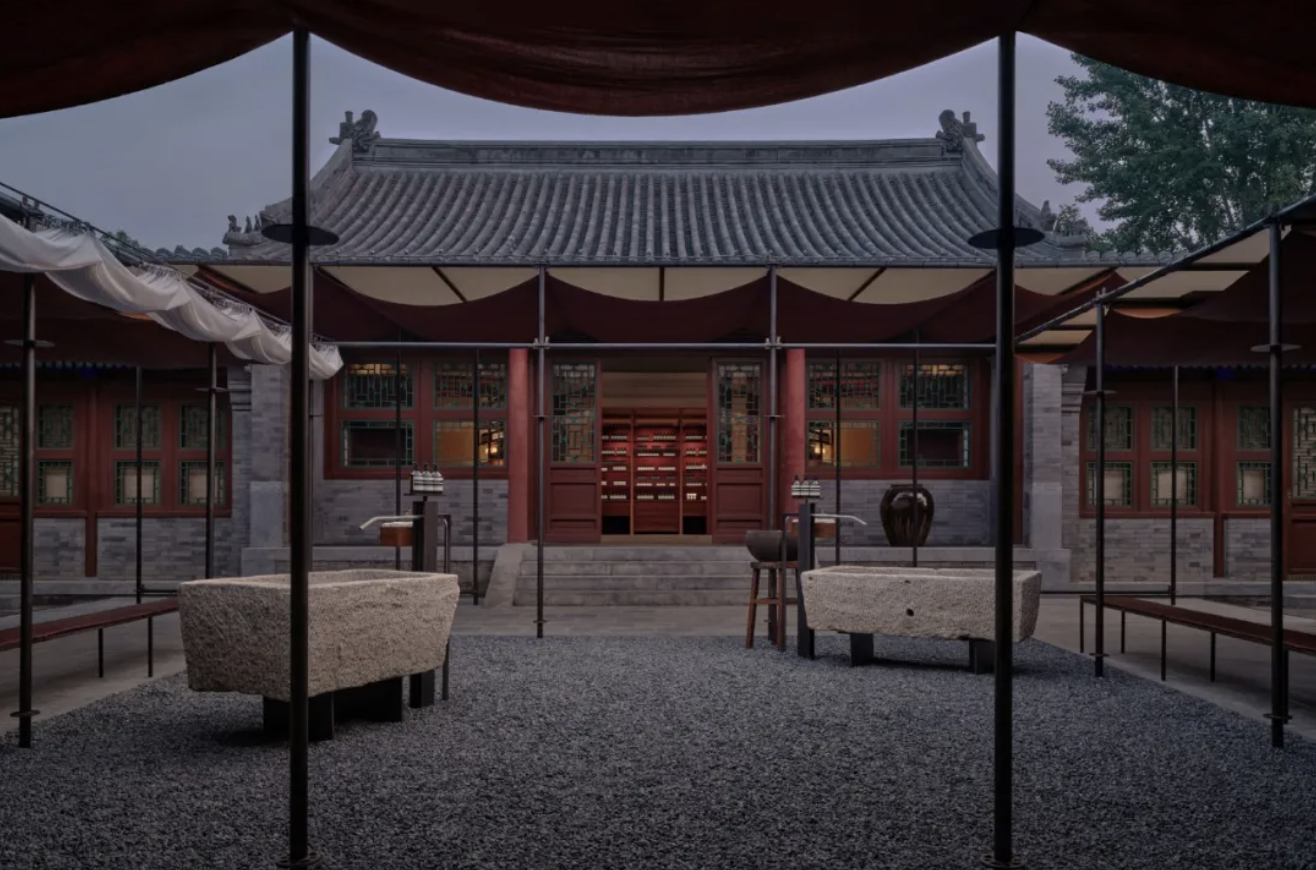
When looking to create captivating retail store spaces, newer doesn’t always mean better.
Brands are seizing on opportunities to blend modern commerce with heritage, using buildings rich in character and history to provide an atmosphere that is impossible to replicate in newly constructed spaces. For brands, leveraging the appeal of these historic buildings can create a distinctive experience that resonates with consumers seeking more than just a transaction.
In an era where online shopping offers unparalleled levels of convenience, physical stores have to deliver an extra dose of something special to draw customers in. With their in-built sense of authenticity, historic buildings offer the perfect backdrop to appeal to customers on an emotional level.
These spaces allow brands to tap into the unique heritage of a city or region, adapting their own brand DNA to connect with local audiences in new markets. In this regard, setting up shop in a historic building can be a powerful differentiator for retailers, allowing them to align themselves with the prestige and legacy of the location, which can enhance the perceived value of their offerings. Going a step further, the reuse of historic structures also helps to communicate a brand’s commitment to sustainability and preservation, appealing to the growing number of consumers looking to prioritise environmental and social responsibility in their purchase decisions.
For brands and retailers, the rising trend of retail spaces in historic buildings represents an opportunity to stand out in a crowded market. By embracing these unique environments, businesses can offer customers an immersive experience that goes far beyond the products on the shelves.
Aesop, Beijing
The new opening sees the brand embracing the traditional architecture of Beijing, allowing the existing layout of the courtyard house to guide the design of the store.
The store is located in a reconstructed courtyard residence in the Wangfujing district of Beijing. Visitors are greeted outside in the courtyard space by canvas pergolas and bluestone sinks, providing a space to relax outside, wash their hands and sample Aesop products in a relaxing setting. A tea table reminiscent of old Beijing market wonton stalls and a traditional style Beijing food box containing Aesop products add to the air of nostalgia. Inside, more traditional furniture is incorporated into the space, designed to echo the traditional functions of the rooms.
The brand’s detail-oriented approach to localisation allows it to feel like a natural and welcome addition to a new market, blending traditional styles with its own brand DNA to attract customers.
NIO, Amsterdam
NIO, the Chinese electric car manufacturer, has opened its flagship European store in a historic seven-storey building on Amsterdam’s Keizersgracht, originally built in the late 19th century.
Named NIO House Amsterdam, the space has been thoughtfully renovated with interior design by Rotterdam-based architecture firm MVRDV, the store blends NIO’s modern brand identity with a deep respect for the building’s heritage.
The design is characterised by a colour gradient that spans the entire building, inspired by NIO’s “blue sky coming” slogan. The gradient begins with earthy tones on the lower floors, creating a warm and grounded atmosphere and transitions to lighter, airy blues as it reaches the upper floors, culminating in a modernist rooftop pavilion. The building offers a variety of spaces for relaxation, work, events, and exhibitions, making it more than just a showroom – it’s a versatile hub for the NIO community in Europe.
Le Labo, Kyoto
New York-based fragrance house Le Labo has unveiled its latest store in Kyoto, a beautifully restored space designed by Tokyo-based Schemata Architects.
Nestled within a 145-year-old traditional wooden townhouse, or Machiya, the store perfectly captures Le Labo’s slow perfume ethos, which emphasises simplicity and high quality raw ingredients. The Machiya, which dates back to 1879 and once served as a respected sake family brewery, has been carefully preserved and transformed into an inviting space where clients can explore pure ingredients and genderless packaging, forging a personal, olfactive connection with the scents.
The restoration, which began over a year ago, was a collaborative effort between Le Labo and Japanese architecture firm Schemata Architects. Together, they worked to preserve the original features of the Machiya, including the floors, walls, framing and sinks, using centuries-old materials and partnering with local artisans. The design seamlessly integrates Le Labo’s vintage aesthetic into the historical context of the Machiya, with the fragrance lab booth constructed from reclaimed Japanese wood rather than the brand’s usual distressed steel. The result is a space that honours Japanese heritage and craftsmanship while offering a uniquely intimate experience for discovering Le Labo’s fragrances.
Starbucks, Daegu
Danish high-end consumer electronics company, Bang & Olufsen, has partnered with Starbucks to open a new store in Daegu, South Korea. The 7,000 square feet space can seat up to 120 guests, and allows for a high-quality music experience made possible by the Bang & Olufsen new Beosound Explore portable Bluetooth speakers, which can also be bought in the coffee shop.
Daegu, the third largest city in South Korea, is known as an artistic and cultural hub for the region and is recognized as a UNESCO City of Music where both contemporary and classical styles continue to grow and flourish. The new Starbucks was built inside the Daegu Jongno Old House, a reinterpretation of a 100-year-old structure where tradition and modern beauty coexist.
The coffee shop also features a separate music listening area, including a fully automatic turntable, where customers can enjoy high-quality music with their coffee.
RH, England
High-end American furniture brand RH (formerly Restoration Hardware) is expanding its retail footprint outside the US, opening a unique location at the historic Aynho Park estate in the English countryside.
Originally built in 1615, the Grade I-listed estate in the Cotswolds has been fully renovated and reimagined as an extravagant retail destination. Across 55,000 square feet, the RH ‘store’ features more than 60 rooms designed to complement the Palladian architecture, employing RH’s signature neutral colour scheme throughout. The establishment goes beyond a traditional retail space, incorporating hospitality elements such as valet parking, a restaurant, hotel-style concierge services, high tea, al fresco dining options and a wine bar, appealing to affluent consumers in the surrounding area.
In addition to its retail offerings, the location features a museum dedicated to celebrating the work of Sir John Soane, who refurbished the house in the 19th century, as well as a design library housing a vast collection of architectural books.
Retail operations at the venue take a subtle approach, with no visible price tags. However, staff are trained to provide attentive and knowledgeable service, available to assist customers with design services, pricing inquiries and placing orders as needed.
Apple, LA
Apple has transformed a derelict theatre building in LA into a stunning new flagship location with its recognisable store design nestled in the middle.
The Tower Theatre was LA’s first theatre to show non-silent movies, but it has been abandoned since the 1980s and Apple has now converted it into Apple Tower. On the outside Apple has restored most of the original features of the cathedral-like theatre building, with the two clues to the new ownership coming from the Apple logo sitting atop the “Tower” sign, which runs up the corner of the building, and the words “Creativity Rises” appearing on the old school movie theatre signage by the front door.
Inside, Apple has stripped out the dark paint and wood panelling of the original location to create a brighter, more modern space. It has also used marble columns and touches of brass and gold colour to bring to life the original, intricate detail of the location. The new design is said to be inspired by the Palais Garnier opera house in Paris.
Seating has been maintained on the balcony level overlooking what is now the main sales area featuring Apple’s signature tables on the ground floor. The former stage has been replaced by a digital screen in an area referred to as The Forum, where staff teach daily classes about practical technology skills to customers sitting on wooden crates.
From a functional perspective, the store operates in the same tried and tested way as all modern Apple stores, albeit with a unique and locally-relevant architectural feature wrapped around it.














































